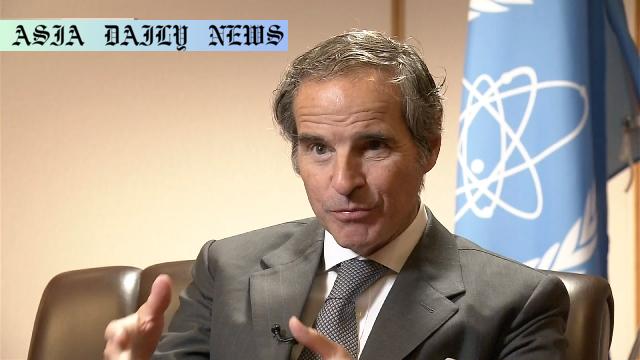Fukushima water: The IAEA steps up monitoring efforts to ensure transparency in the discharge of treated water from the damaged plant.
IAEA Director General Rafael Grossi announced plans for frequent monitoring of discharged water at Fukushima.
The treated water is diluted to meet safety standards for tritium levels before being released.
China and other nations are involved in additional testing to enhance trust in the process.

IAEA’s Commitment to Transparency
The International Atomic Energy Agency (IAEA) has announced its plans to significantly increase the frequency of monitoring the treated and diluted water that is being discharged into the ocean from the Fukushima Daiichi nuclear power plant. This decision underscores its commitment to fostering trust and transparency among international stakeholders. Rafael Grossi, Director General of the IAEA, shared this comprehensive plan during an exclusive interview with NHK, Japan’s public broadcaster. Ensuring the safety of discharged water has become a pivotal issue since the nuclear accident at Fukushima, and Grossi emphasized the importance of providing reliable data to reassure nations about the process.
Scientific Process Behind Water Treatment
The water in question originates from attempts to cool molten fuel at the damaged plant, which inevitably mixes with groundwater and rainwater. This water is treated to eliminate most radioactive materials, but tritium, a radioactive isotope of hydrogen, remains. To address this, the plant’s operator dilutes the treated water to levels approximately one-seventh of the World Health Organization’s guidelines for drinking water. By discharging treated and diluted water within these strict safety parameters, the process aligns with international standards.
Collaboration with International Experts
Beyond the IAEA’s own measures, institutions from other nations, including China, are actively participating in additional testing to validate the safety of the released water. Grossi even took part in these activities, boarding boats alongside a Chinese expert to collect and test samples of the ocean water. This collaborative approach symbolizes the agency’s efforts to engage stakeholders directly and foster consensus through joint verification efforts.
Key Implications for Global Trade
Discussions have broadened beyond scientific scrutiny, influencing trade dynamics in the region. China, among other nations, has conditioned the phased resumption of Japanese seafood imports on conclusive test results from multiple parties. While Beijing and Tokyo reached an agreement in September, the final decision hinges on the transparency and reliability of the monitoring data. This directly affects not only the trade sector but also the livelihoods of fishermen in Japan who rely on sustainable export parities.
The Role of Enhanced Monitoring
Grossi revealed that the IAEA is planning to regularly monitor the discharged water at much shorter intervals than before. The goal is to provide real-time updates to international stakeholders, ensuring transparency and addressing concerns as they emerge. This move demonstrates the commitment to stringent scientific practices and confidence-building measures to dispel skepticism about the discharge process.
The Path Forward
The IAEA has reiterated its assurance that the systems in place comply with global safety standards. Grossi remains optimistic that over time, the enhanced monitoring will validate the methodologies used, ultimately leading to widespread acceptance of the water release system. While the road ahead involves addressing both scientific and geopolitical challenges, the collaborative initiatives have laid a promising foundation for fostering long-term trust.
As the international community watches closely, the outcomes of these enhanced monitoring efforts could serve as a critical precedent for managing environmental safety in post-accident nuclear decommissioning processes. The IAEA’s proactive stance highlights the importance of science, transparency, and global collaboration in addressing complex challenges.
Commentary
Science Meets Diplomacy
The IAEA’s decision to increase the frequency of monitoring treated water from the Fukushima nuclear plant is a welcome development. It underscores their commitment to transparency — a trait that has become increasingly necessary given the amount of international scrutiny surrounding this issue. By involving experts from nations with vested concerns, such as China, the move further solidifies the agency’s impartial stance. This is a commendable effort to blend scientific rigor with diplomacy in pursuit of trust and confidence.
Addressing Stakeholder Concerns
China’s involvement, as well as its insistence on additional testing, reveals the broader implications of the discharge process beyond just environmental and scientific dimensions. The phased resumption of seafood imports ties into not only trade relations but also public perception in affected countries. It shows that beyond providing accurate data, the IAEA and Japan must continuously work to persuade stakeholders that their methods and motives align with global safety standards.
Building Long-Term Confidence
Transparency is essential, and the IAEA’s decision to openly collect data more frequently paves the way for building long-term confidence. This sets a positive precedent for future nuclear cleanup operations, where trust and international collaboration are key. With time and consistent effort, this initiative could rebuild confidence in the surrounding region, proving that science and integrity can restore what was once lost in the wake of catastrophe.


